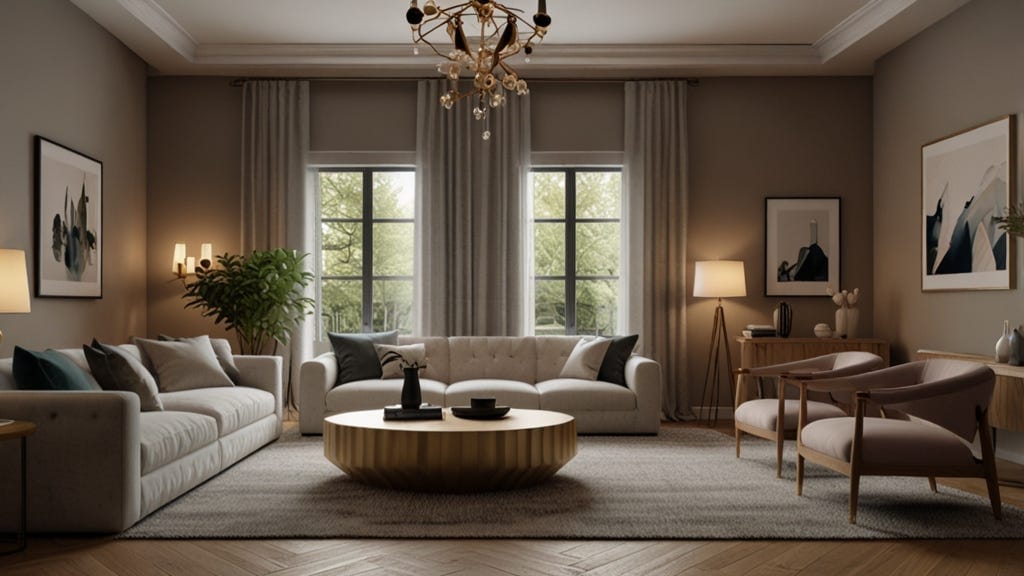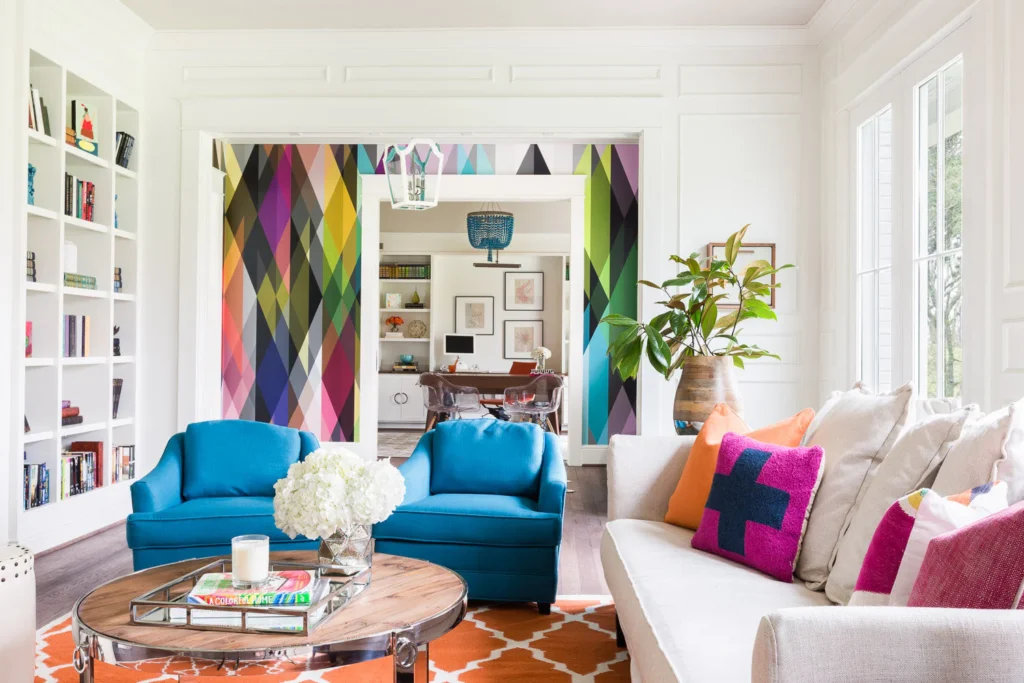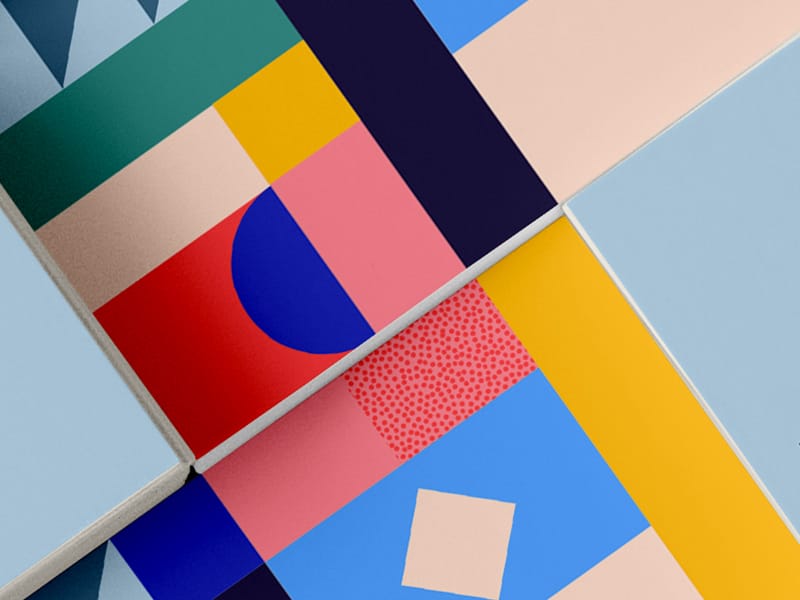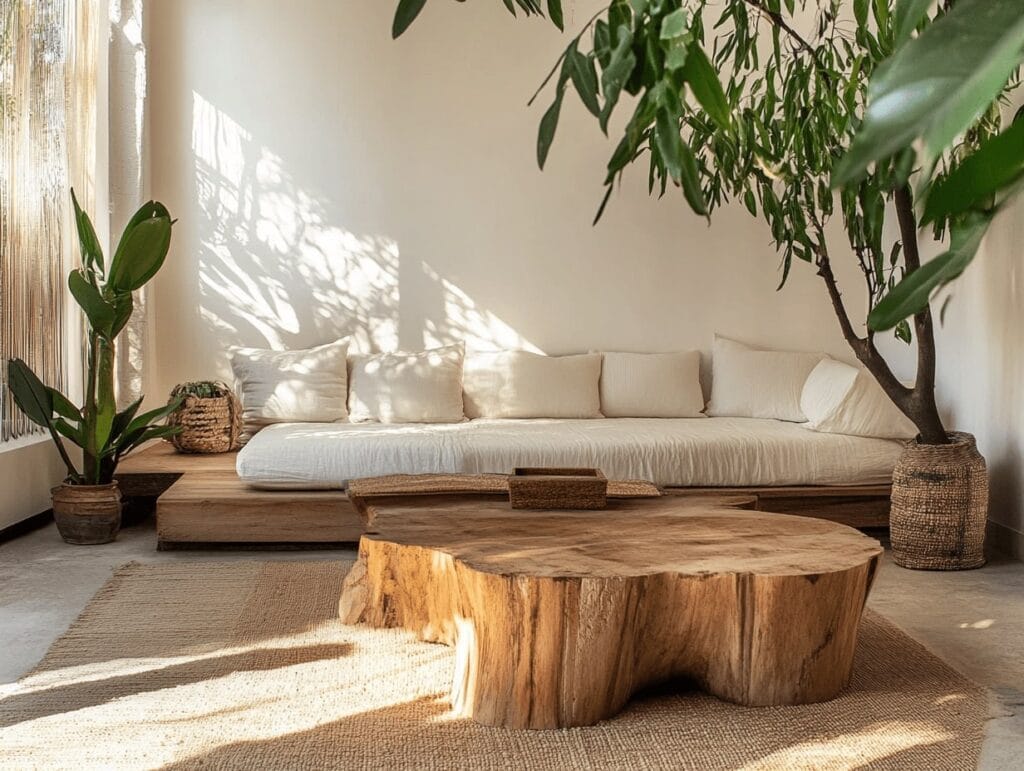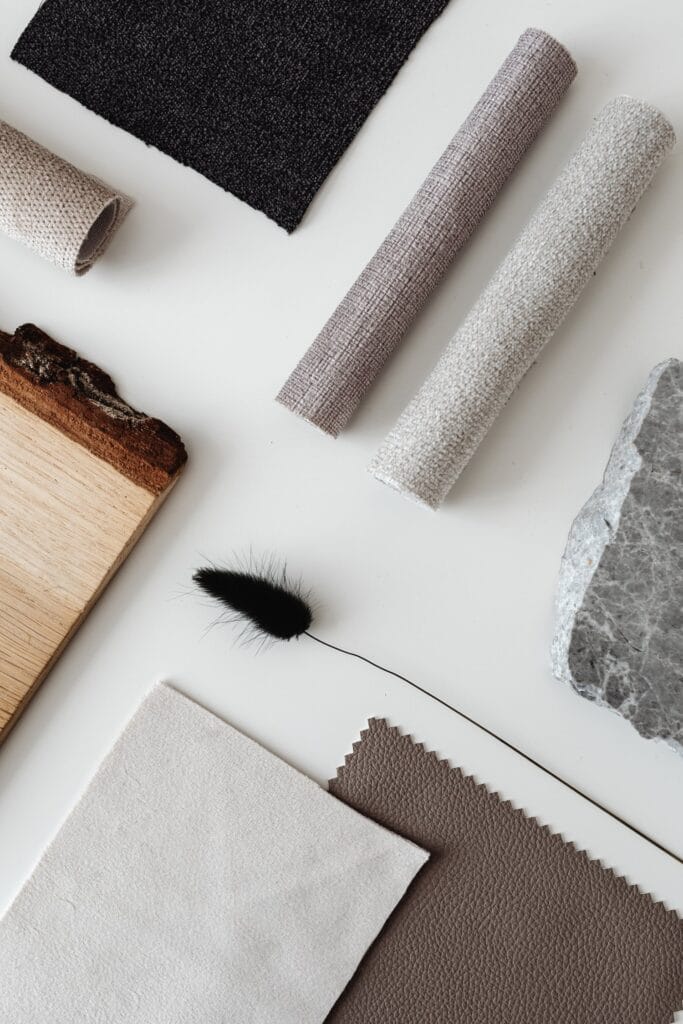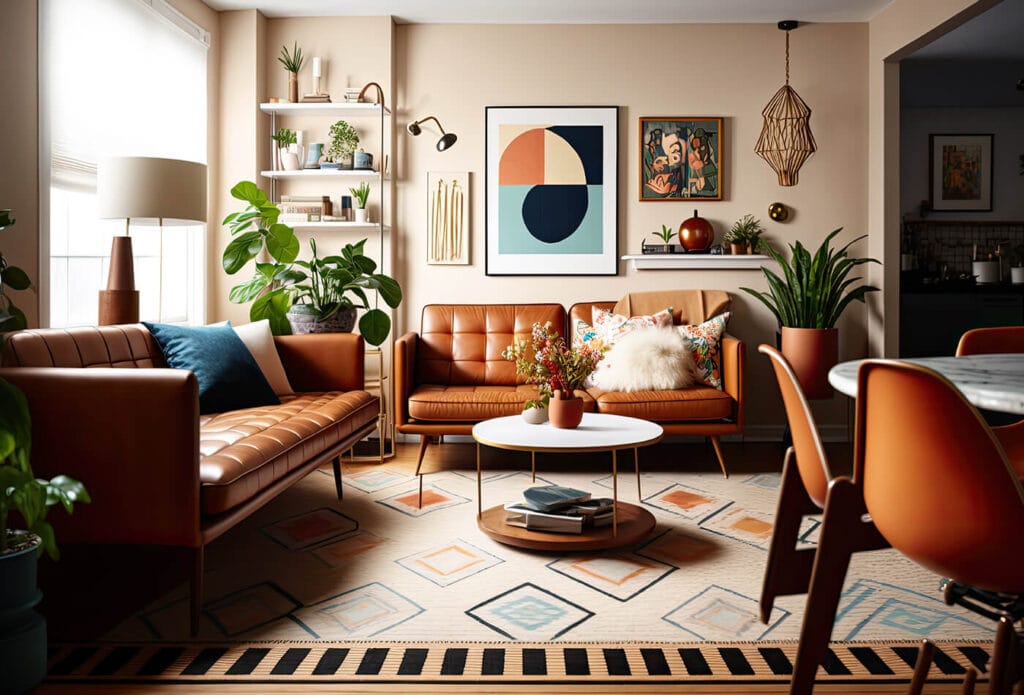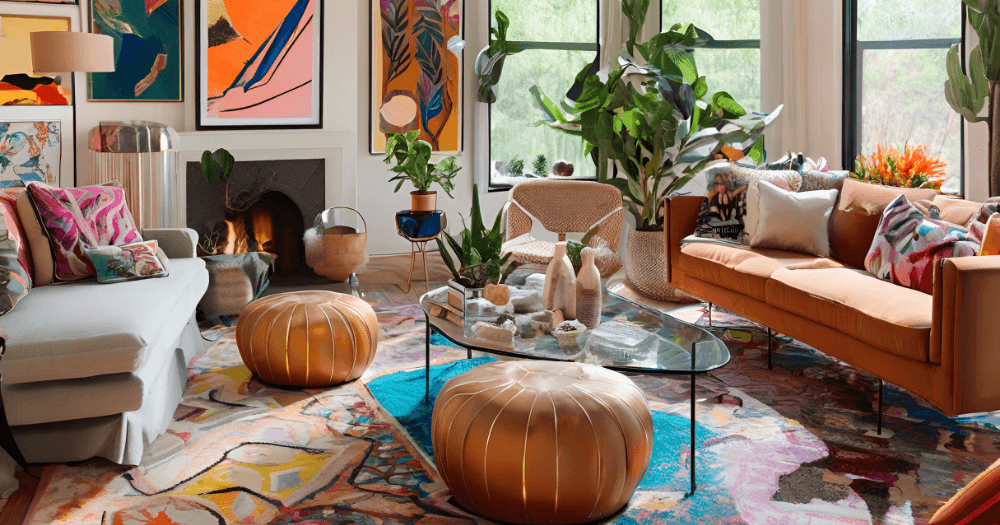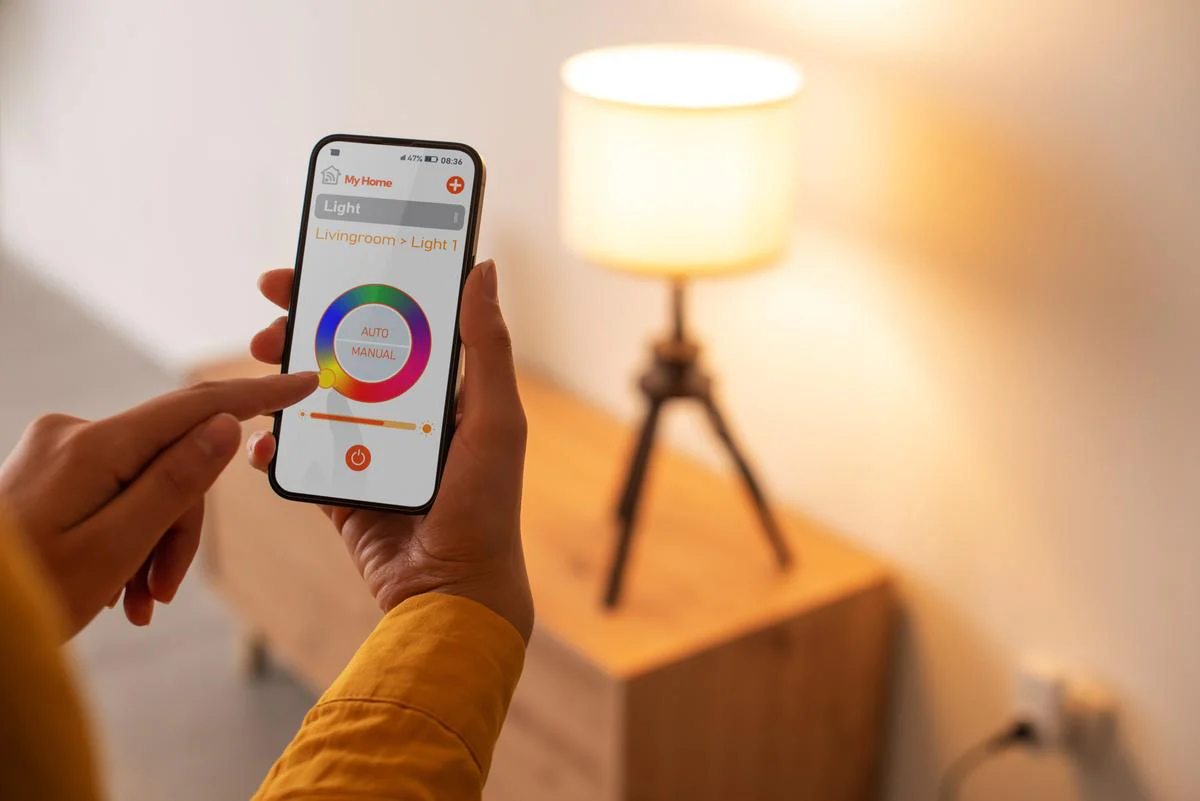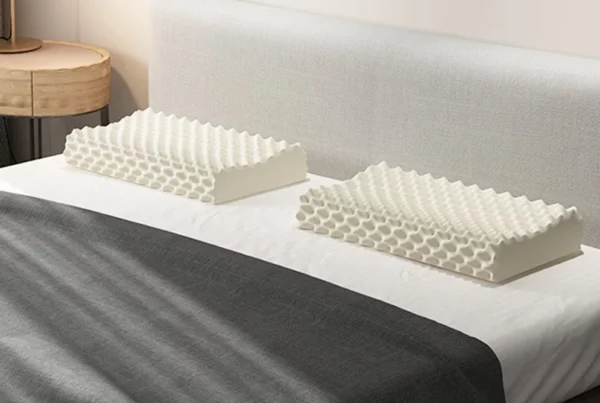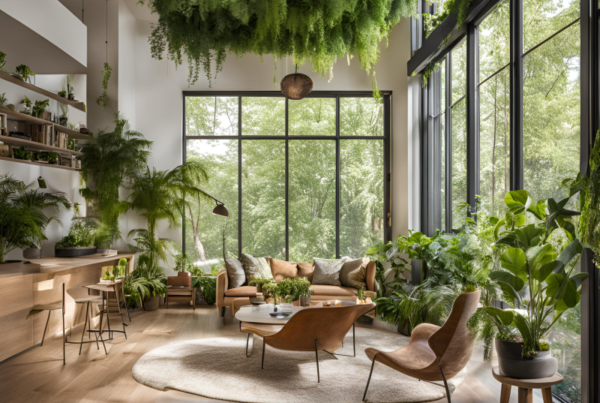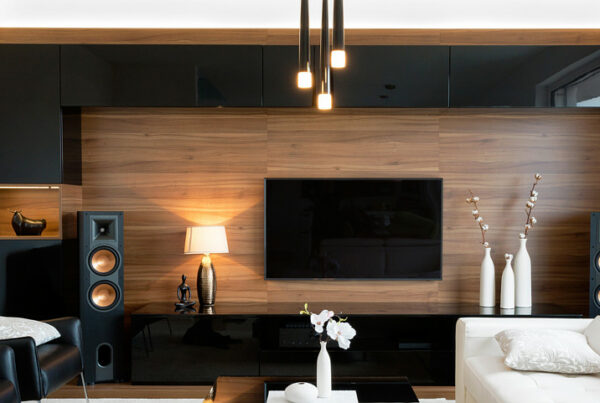In today’s rapidly changing living environment, the way we design and decorate our homes has become increasingly important for both functionality and aesthetics. This article explores various approaches to interior design that cater to contemporary needs, offering solutions that enhance emotional well-being, promote sustainability, and incorporate smart technology.
Whether you’re looking to create a more inviting atmosphere, make eco-friendly choices, or integrate high-tech features into your home, this guide provides valuable insights to help you achieve a space that reflects your personal style while meeting your practical requirements.
Table of Contents
Bold Colors to Evoke Emotion
When it comes to interior design, the choice of color can profoundly affect our emotions and overall well-being. Bold colors are not just eye-catching; they possess the remarkable ability to transform a space and evoke a wide range of feelings. By strategically incorporating these vibrant hues into your home, you can create an atmosphere that resonates with your personality and enhances your lifestyle.
Understanding Color Psychology
Before diving into specific colors, it’s essential to understand the principles of color psychology. This field studies how colors influence human behavior and emotions, suggesting that certain colors can trigger particular feelings. For instance:
- Red: Often associated with passion and energy, red can invigorate a space but may overwhelm if used excessively.
- Blue: A calming color that evokes tranquility, shades of blue are perfect for creating relaxing environments.
- Yellow: Known for its cheerful disposition, yellow can stimulate happiness and creativity, making it an excellent choice for kitchens or playrooms.
- Green: Associated with nature, green brings in a sense of balance and rejuvenation, ideal for bedrooms and study areas.
- Purple: A color linked to luxury and creativity, purple can inspire imagination and elegance in a space.
Integrating these colors thoughtfully can transform your home into a sanctuary that reflects your emotional landscape.
Bold Color Combinations
Utilizing combinations of bold colors can enhance the emotional impact of your space significantly. Here are some suggestions:
- Teal and Coral: This combination blends the calming effects of teal with the energetic vibrance of coral, perfect for lively living areas.
- Mustard Yellow and Deep Navy: A striking contrast that brings warmth and depth, suitable for a home office or reading nook.
- Fuchsia and Lime Green: A playful pairing that exudes creativity and joy, ideal for spaces where you want to inspire fun and imagination.
When effectively paired, these colors can create dynamic environments that evoke various responses, from energizing to soothing.
Practical Tips for Using Bold Colors
While the allure of bold colors is undeniable, careful application is crucial. Here are some practical tips for incorporating these hues into your space:
- Start Small: If you’re hesitant about bold colors, begin with smaller accent pieces like cushions or artwork to gauge your emotional response.
- Accent Walls: Create a focal point by painting one wall in a bold color; this method adds drama without overwhelming the room.
- Use Accessories: Integrate bold colors through decorative items such as rugs, vases, or lamps to enhance existing decor.
- Consider Lighting: The perception of color can change with lighting; experiment with natural and artificial light to see how it interacts with your chosen bold hues.
These strategies allow you to embrace bold colors without overwhelming the overall aesthetics of your home.
The Emotional Impact of Color in Specific Rooms
Different rooms serve different purposes, and the chosen colors can significantly influence moods suitable for their activities:
- Living Room: Opt for warm, inviting colors like burnt orange or deep red to encourage lively interaction among guests.
- Kitchen: Bright yellows or greens can stimulate appetite and energy, making them ideal for this bustling space.
- Bedroom: Choose cooler tones like serene blues or muted greens to promote relaxation and sleep.
- Home Office: Incorporate invigorating colors like bright green or orange to boost creativity and focus during work hours.
By tailoring color choices to the specific functions of each room, you can maximize emotional benefits throughout your home.
Conclusion
Incorporating bold colors into your interior design is more than just a aesthetic choice; it is a means of evoking emotion and creating an environment that feels uniquely yours. As you explore the possibilities of color, consider how each hue resonates with your personal feelings and style. Whether you choose to embrace the vibrant energy of reds and yellows or the soothing tones of blues and greens, remember that every color tells a story—one that can transform your living space into a beautiful emotional retreat.
For more insights on color psychology and its applications in interior design, check out Verywell Mind’s guide on color psychology.
Sustainable Materials for Modern Living
As the world becomes more conscious of environmental issues, the demand for sustainable materials in modern living spaces is growing. Individuals today seek to create homes that not only reflect their style but also contribute positively to the planet. The integration of eco-friendly materials in construction and interior design enhances aesthetic appeal while also promoting sustainable living practices.
The Rising Popularity of Sustainable Materials
Consumer awareness around the environmental impacts of traditional building materials is at an all-time high. This has led to a significant shift towards renewable resources and ecologically-friendly choices. Sustainable materials not only reduce the carbon footprint but often offer enhanced durability and lower maintenance costs. Here are few materials that stand out in modern sustainable design:
- Bamboo: Known for its rapid growth and minimal impact on the environment, bamboo is a fantastic alternative to wood. It’s used in everything from flooring to furniture and offers a unique aesthetic that combines beauty with sustainability.
- Reclaimed Wood: Utilizing wood salvaged from old buildings or furniture prevents waste and reduces the demand for new lumber. This material carries a rich history and adds character to any living space.
- Recycled Metal: Metals like aluminum and steel can be recycled indefinitely without losing quality. Incorporating recycled metal in fixtures and design elements contributes to a circular economy.
- Natural Stone: Taking advantage of naturally occurring stone materials like granite and slate can add elegance to spaces while being environmentally conscious. These materials are durable and reduce the need for frequent replacements.
The Benefits of Using Sustainable Materials
Opting for sustainable materials brings numerous benefits that extend beyond environmental protection. Here are some of the most compelling reasons:
- Healthier Indoor Air Quality: Many conventional materials release volatile organic compounds (VOCs) that can harm indoor air quality. Sustainable materials often minimize or eliminate these emissions, leading to a healthier living environment.
- Energy Efficiency: Sustainable options typically come with better insulation properties, reducing energy consumption and lowering utility bills. For instance, using natural fibers in rugs or curtains can contribute to improved thermal efficiency.
- Longer Lifespan: Investing in high-quality sustainable materials can prove economical in the long run due to their durability and lower maintenance needs.
- Style and Versatility: Sustainable materials offer a diverse range of styles that cater to modern design sensibilities, ensuring that eco-friendly choices do not compromise aesthetics.
Innovative Sustainable Materials to Watch
As technology evolves, so does the innovation within the realm of sustainable materials. New products are continually emerging that push the boundaries of what is possible in eco-friendly design:
- Mycelium: This fungus-based material is gaining attention as a sustainable alternative for packing materials, furniture, and even building blocks. It’s biodegradable and can be grown in custom shapes for various applications.
- Hempcrete: Made from hemp fibers and lime, this natural material is used for insulation and wall construction. It is lightweight, breathable, and contributes to the carbon neutrality of buildings.
- Recycled Plastic Fabrics: Clothing and upholstery made from recycled plastics are becoming more prevalent. These fabrics not only help reduce plastic waste but also come in a variety of textures and colors, proving that sustainability does not sacrifice style.
Finding the Right Sustainable Materials for Your Home
When incorporating sustainable materials into your living space, it’s essential to consider both aesthetic and practical aspects. Here are a few tips to guide your choices:
- Research Suppliers: Look for suppliers and manufacturers committed to sustainability. Certifications like FSC (Forest Stewardship Council) or Cradle-to-Cradle can help ensure you’re making responsible choices.
- Evaluate Life Cycle: Consider the entire life cycle of the materials, from extraction to disposal. Opt for materials that have a positive impact throughout their lifecycle.
- Think Local: Local sourcing of materials can reduce transportation emissions and support the local economy, contributing to a more sustainable community.
As we embrace the importance of sustainability in our daily lives, the materials we choose play a pivotal role in shaping our future. For those interested in diving deeper into sustainable practices, Green Building Advisor offers valuable insights and resources tailored to eco-friendly living.
Maximalism: Express Your Unique Style
Welcome to the vibrant world of maximalism—a design philosophy that celebrates boldness, variety, and emotional resonance. In stark contrast to minimalist trends, maximalism invites you to embrace exuberance in your decor, giving you the creative freedom to showcase your personal style without constraints. This section delves into how maximalism provides the perfect canvas for expressing individuality through decor.
The Core Principles of Maximalism
At the heart of maximalism lies a few guiding principles that set it apart from other design styles:
- Diversity in Textures and Patterns: Maximalism encourages the playful combination of various textures and patterns. Picture a plush velvet sofa complementing a floral patterned rug, accented by geometric throw pillows. This juxtaposition creates a rich sensory experience.
- Colorful Expression: Unlike the muted palettes prevalent in minimalist designs, maximalism thrives on bold colors. Think of vibrant jewel tones and striking pastels that can make a statement or evoke an emotion in any space.
- Eclecticism: Maximalism invites you to mix styles, eras, and cultures. Vintage finds can coexist with contemporary pieces, which adds personality and depth to your interior.
Choosing Colors to Tell Your Story
Color plays a pivotal role in maximalist design. It’s not just about slapping a few bright hues on the walls; it’s about creating a narrative through your color choices. Why not use colors that reflect your personality or the feelings you want to evoke?
- Earthy Tones: These can create a grounding atmosphere, encouraging relaxation and a sense of comfort.
- Vibrant Shades: Daring colors like fuchsia or electric blue can energize the space and inspire creativity.
- Accent Colors: Consider unexpected pops of color with wall art or decorative accents that stand out against the base colors.
Curating Your Unique Collection
Maximalism invites you to curate a collection that reflects your experiences and interests. Here are ways to embrace this concept:
- Travel Memorabilia: Incorporate items from your travels—be it artifacts, textiles, or art. These pieces tell a story and imbue your space with a sense of adventure.
- Artistic Displays: Create gallery walls showcasing everything from modern art to cherished family photos. This not only personalizes your decor but also ignites conversation.
- Plants and Nature: Introducing greenery adds life to your interiors. Mix different plant sizes, shapes, and pots to enhance your maximalist theme.
Maximalism in Furniture Choices
Opting for furniture that embodies maximalist attributes is essential. Here’s how to choose pieces that celebrate your unique style:
- Statement Furniture: Invest in bold pieces like a vibrant sectional or an ornate coffee table. These can serve as the focal point of your design.
- Layering: Don’t hesitate to layer furniture styles. A vintage armchair can complement a contemporary sofa, creating a cohesive yet dynamic look.
- Functionality with Flair: Look for furniture that’s not just pretty but practical—think stylish storage solutions that enhance your decor while keeping things organized.
The Evolution of Maximalism
Maximalism as a design movement has evolved significantly, embodying cultural shifts and individual expressions. With the rise of social media platforms like Instagram and Pinterest, visual storytelling has never been more accessible. Designers and homeowners alike are showcasing their maximalist spaces, encouraging others to embrace their unique tastes.
Whether it’s through a collection of art, vibrant colors, or eclectic decor, maximalism allows you to communicate who you are in your living space authentically. It is also about the experience of living within your space; maximalist design is less about following strict rules and more about creating an environment that sparks joy and resonates with your personal style.
If you’re eager to explore how maximalism can redefine your living space, check out Home Decor Trends 2024 for more inspiration on this exciting design philosophy.
Smart Decor Solutions for the Tech-Savvy
As technology continues to influence our daily lives, it also permeates our living spaces, offering innovative and functional decor solutions for the modern home. Smart decor transcends mere aesthetics; it enhances convenience, efficiency, and even wellness. Here are some of the latest trends and products that embody this fusion of technology and stylish decor.
1. Smart Lighting
Gone are the days of simply flipping a switch. Today’s smart lighting systems allow users to control the ambiance of their homes with just a tap on their smartphones. From adjusting brightness levels to changing colors and setting schedules, smart lights create a personalized atmosphere at any time of the day. Key features include:
- Voice Control: Many smart lighting solutions are compatible with voice assistants like Amazon Alexa and Google Assistant, making it easier than ever to manage lighting throughout your home.
- Energy-Efficiency: LED smart bulbs consume less energy, ultimately lowering utility bills while providing customization options that can enhance mood or relaxation.
- App Control: Control light settings remotely or automate them based on your routine through dedicated smartphone applications.
2. Smart Home Integration
The future of home decor lies in the seamless integration of devices. Smart decor furniture can now act as a hub for various connected technologies. For example:
- Smart Mirrors: These often come with built-in screens that display the weather, news updates, or even your health data right in your bathroom or dressing area.
- Smart Desks: Designed for the home office, these desks can adjust heights, track your sitting time, and connect to personal apps to enhance productivity.
- High-Tech Rugs: Some modern rugs come embedded with sensors to monitor activity levels in the home, providing valuable data about movement patterns.
3. Multifunctional Furniture
Maximizing living space is crucial, especially in urban environments. Smart multifunctional furniture can transform a small area into a sleek, organized oasis. These pieces often incorporate technology while serving multiple purposes:
- Convertible Sofas: Many modern sofas can be transformed into beds, incorporating storage for linens and blankets, all while maintaining a stylish appearance.
- Storage Ottomans: These versatile mini-furniture pieces not only provide seating but also hide away remotes, magazines, and other clutter.
- Smart Coffee Tables: Featuring wireless charging pads, built-in refrigerators, or even Bluetooth speakers, smart coffee tables are redefining convenience in the living room.
4. Intelligent Climate Control
Maintaining a comfortable living environment is easier than ever with intelligent climate control systems. These technologies allow homeowners to monitor and adjust temperature, humidity, and air quality:
- Smart Thermostats: Devices like the Nest Learning Thermostat adapt to your habits, optimizing energy use and maximizing comfort effortlessly.
- Air Quality Monitors: These devices can alert you to any irregularities in your indoor air quality, ensuring a healthier living space.
- Smart Humidifiers: These can be controlled via smartphone applications, ensuring that you maintain ideal humidity levels without the hassle of manual adjustment.
5. Personalized Decor with Augmented Reality (AR)
One of the most exciting developments in tech-savvy decor is the integration of augmented reality into the purchasing process. Home decor apps allow users to visualize how furniture and art would look in their space:
- Interactive Layouts: Using AR, you can position virtual furniture within your real space to see how it fits before making a purchase.
- Virtual Art Gallery: Apps can suggest color schemes and synchronously display how different pieces of art would look on your walls.
These innovations not only provide a unique aesthetic to interior spaces but also enhance everyday living. By incorporating smart decor, you create a home that reflects your style while offering the modern conveniences of technology. Explore more about smart home innovations at Home Depot’s Smart Home Center.
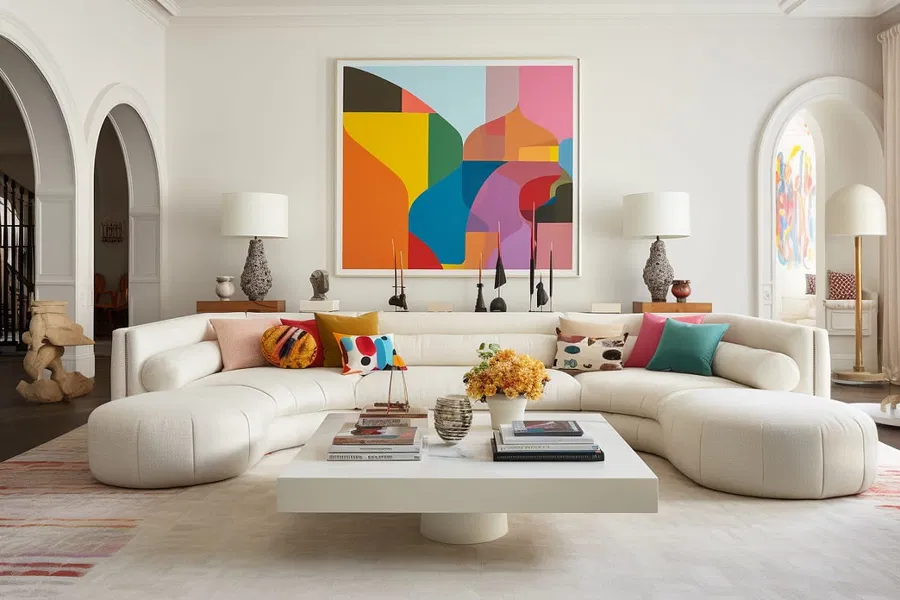
This article explores various interior design concepts, emphasizing the importance of color, sustainable materials, maximalism, and smart decor solutions. Bold hues can enhance emotional well-being in different rooms, such as warm tones for living areas and cooler shades in bedrooms. Sustainable materials like bamboo, reclaimed wood, and mycelium not only reduce environmental impact but also improve indoor air quality and energy efficiency.
Maximalism allows individuals to express their unique styles with a blend of diverse textures, colors, and eclectic decor. Intelligent decor solutions, including smart lighting and multifunctional furniture, elevate convenience and efficiency in modern homes. To effectively integrate these concepts, focus on personalizing spaces with meaningful decor, investing in sustainable materials, and adopting technology that enhances daily living.



